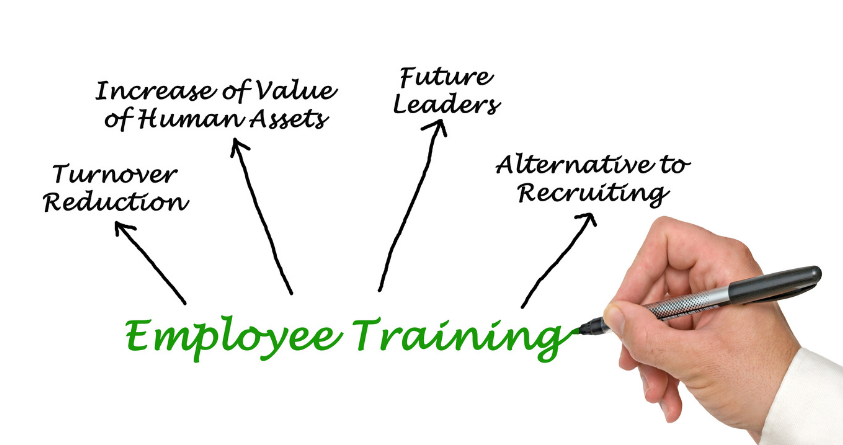The Critical Role of Application Training for Effective Employee Onboarding
In this article, we examine the crucial role of Application Training when considering Effective Employee Onboarding and look at some of the tools available that improve outcomes, reduce costs and enhance employee engagement.
What does your Organisation’s Application Training and Onboarding Process look like?
Is your application training process akin to “sink or swim” or lessons in the shallow end first? Or is it the equivalent of turning up in your swimming outfit only to find no swimming pool, but a raging river and a well-thumbed manual entitled “Swimming for beginners”?
Excellent Employee Onboarding and Engagement are goals that all organisations must strive to attain. The reasons should be clear; the cost of attracting and hiring new employees is very high, there are significant labour shortages in some markets and engaged employees will be more productive. Highly engaged teams are 21% more productive according to a study by Gallup
In short, it’s critical that we protect, develop and retain our talent.
It is essential to onboard new colleagues well as first impressions count. A new employee’s experience of their initial weeks is one of the key factors determining whether they’ll stay long enough to make a positive contribution. Further reading on the most common challenges associated with Employee Training on New Systems can be found here
The success of Employee Onboarding is clearly in the interest of both parties, but stems from different wants and needs.
New Employees Want to:
- Quickly overcome any natural anxieties about being able to perform their new job and contribute to the success of the company.
- Feel that they fit in and are a legitimate member of the team and have a sense of belonging.
- Achieve a level of autonomy so that don’t over burden the team and quickly become a contributor.
- Want to be recognised and enjoy their work, to find it rewarding, and to see that they have a path to progress in the company.
From the Employer’s Perspective, their Goals are to have:
- A complete team of full-performance employees, a scenario where no team members are on “ramp up”.
- Highly proficient teams that make few errors and can attain KPIs and SLA with ease.
- Employees that are knowledgeable, adaptable, and flexible that can respond quickly to business changes and challenges.
- Growing teams with high morale, engagement and job satisfaction with the potential to develop further.
- To avoid expensive and disruptive employee churn.
Organisations rely heavily on business systems and applications, and these represent a large part of many employees’ role and time at work. Thus, it’s critical that an employee engages well with the company’s systems and applications.
New employees who benefit from comprehensive on-boarding processes are more likely to develop into well engaged team members and a “win” for all stakeholders; customers, business partners, other team members and, the employer.
What Tools do we have to make Effective Application Training a reality?
Digital Adoption Platforms (DAP) evolved specifically to accelerate and simplify the adoption of application software. Because software applications are tightly intertwined with business processes, they can play a critical role in the overall employee development plan.
What does a Digital Adoption Platform look like from the Employee Perspective?
Crucially, the best DAP solutions are unobtrusive and new employee may be unaware that they’re installed. However, the recruit will notice that can use business applications within the first two days of starting with their new job, and that these same applications appear intuitive and logical. Help and guidance is delivered “in-context”, where and when needed, without being overbearing.
They’ll also have immediate access to in-depth and pertinent help content with the option of consuming key snippets of user training content without leaving the business application. Furthermore, they’ll have the opportunity to progress through a checklist of required steps leading to higher proficiency and more advanced capabilities.
A Digital Adoption solution allows organisations to move away from the traditional prescriptive training courses on isolated web platforms or stand-alone Apps. No longer are New Employees asked to spend the first few weeks, when their experience is so crucial to future retention, completing numerous training courses. No more is there a pass or fail system which prohibits new users moving on until they hit the mandated pass rate.
With a contemporary DAP, up-front application training can be limited to the fundamentals and the remainder can be delivered as “in application” training. This is akin to on-the-job-training and can be delivered in shorter, more effective sessions that can be monitored automatically.
This video helps to explain how it works.
As we all know, there’s more to good application on-boarding than enhanced help and guidance. Using well considered workflow schemes, automation and “auto-pilot” routines, applications can be made much easier to use and understand.
DAP systems include these capabilities to make well-trodden paths in applications easier to navigate and execute, allowing users to focus on more added value tasks. In short, by improving the user experience, employees are unburdened from many repetitive tasks that sap energy and morale.
Further reading: Top 5 Employee Onboarding Challenges Solved by a Software Adoption Solution.
Finally, How can Organisations Measure the Effectiveness of their Employee Application Onboarding Processes?
Application Usage Analytics provide the essential insights into the use of application software. This delivers much more than basic login times and connection metrics. Effective Application Usage Monitoring measures the aggregate performance of discrete segments of users and can compare these with other employees.
These metrics can include pointers to the usability of the software such as the frequency of having to re-enter corrected data. In addition to measuring session performance, the analytics helps organisations to set realistic baseline metrics for KPIs and SLAs rather than relying on guesswork.
Analytics platforms surface the raw data and identify where and how applications can be enhanced to result in fewer errors, greater productivity and thus more engaged employees.
Supporting your new employees with tools to aid application training helps to preserve precious engagement and ensures they’ll be confident in the “deep end” in no time!
To understand how we can help your organisation to deliver effective application training and improve employee engagement please leave your details here and one of our experts will make contact.











